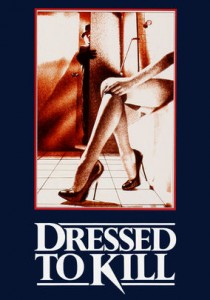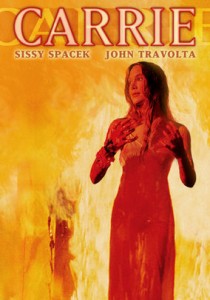Dressed to Kill-1980
Director Brian De Palma
Starring Angie Dickinson, Nancy Allen, Michael Caine
Top 250 Films #16
Top 40 Horror Films #5
Scott’s Review #164
Reviewed September 2, 2014
Grade: A
Dressed to Kill (1980) is Brian De Palma’s most significant work throughout his storied career.
Set in New York City, the film is essentially divided into two halves.
The first half centers around Angie Dickinson, who plays a bored housewife named Kate. She is unhappy in her marriage and seeks therapy from a psychiatrist played by Michael Caine, to whom she makes sexual advances.
She is unfaithful to her husband, yet is a kind, intelligent, cultured woman. She adores her son and loves her husband but is utterly unfulfilled with life.
Do we, the audience sympathize with her? Does she get what she deserves? Is she a victim? One powerful scene involves a wide-eyed little girl who cannot stop staring at Kate. Can she sense Kate’s shenanigans? Does she sense her conflict? Does Kate feel guilt?
Kate is a complex character and brilliantly played by Dickinson, who gives the character sexiness, softness, and appeal.
After a shocking event in a high-rise elevator rivaled only by the shower scene in Psycho (1960) in its surprise and terror, the remainder of the film belongs to Nancy Allen, who plays a prostitute named Liz, determined to solve a mystery to clear her name.
De Palma sets the dreamlike tone with a sizzling opening shower scene sure to make the prudish blush in its explicitness, which I found deliciously sexy.
A ten-minute museum sequence speaks volumes without dialogue as Kate has a cat-and-mouse flirtation with a stranger.
The brilliance of Dressed to Kill is its versatility and complexity and contains one surprise after another, from the elevator scene to the final reveal to the final stage itself.
It is part horror film part thriller and always stylish.
The film was not well regarded upon its release, but over the years has been respected due to its creativity and excellent mood. Many scenes are shot in slow motion adding an effect to them.
Dressed to Kill (1980) is simply brilliant on every level.


